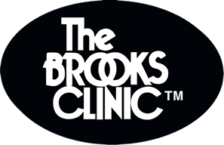Exercise therapy is physical exercises or activities designed to reduce pain caused by an injury. Patients who do exercise therapy benefit tremendously. From an increased independence and a reduction of medication, to increased overall health, when you do exercise therapy, you feel better and experience less pain. Exercise not only helps with pain management, it also helps prevent further injuries. Here are some reasons why upper body exercises are great for pain management.
Protect the Neck
Neck pain is usually caused by things you may not even think of such as misaligned hips, spine, and shoulders. As a result of this misalignment, the muscles of the neck and upper back tense up, leading to neck stiffness and pain. Therefore, it is important to exercise different areas of the upper body to prevent the muscles of the neck an upper back from tensing up.
Almost everyone, at some point in their lives, has experienced neck pain, mostly because of overuse or misuse of muscles and ligaments. Other causes of neck pain include working with computers, which has shown to take its toll because of sitting for long periods of time. Developing a strong upper body can do wonders for pain management. You can build your upper body strength by doing exercises that involve stretching and building muscles.
If you think about it, the neck serves as a gateway from your brain to the rest of your body. Considering your neck has such an important job, there is not much muscle volume protecting it. Strengthening that area of your body to allow a clear pathway from the brain to the rest of your central nervous system will improve your body’s overall health.
Who should help me with my exercise regimen?
An exercise therapist is trained in the principles of rehabilitation and knows how important exercise is for body repair. Exercise therapists are specially trained to tailor a program that is just right for you.
What are some upper body exercises I can do?
Certain upper body exercises are specifically designed to strengthen neck and upper body muscles. The following are just a few of the many exercises you can do to strengthen your upper body and to manage your pain. Remember: always check with your doctor before beginning a fitness regimen. If you experience any pain while exercising, stop and discuss it with your doctor or exercise therapist.
Shoulder shrugs:
– Raise your shoulders up toward your head.
– Release and repeat 2-4 times.
Arm circles:
-Stretch arms out to your sides.
– Rotate arms forward, then back.
– Repeat 3-5 times.
Wall push-ups:
– Stand with your feet about two feet from the wall.
– Put your hands on the wall, a little wider apart than your shoulders.
– Move your chest to the wall, then push back.
– Repeat 10 times
Chest Stretches:
– With your arms at chest height, clasp your palms together tightly.
– Hold for 5-10 seconds, then rest for 5 seconds.
– Repeat five times.
Side Lateral Raises: (can be done while standing or sitting)
– Start with your arms down at your sides, then slowly them to shoulder height.
– Lower arms.
– Repeat 15 times.
– For added resistance, you can hold a weight or even a water bottle.
Triceps Stretches:
– With your right hand, reach over your shoulder and down your back as far as you can.
– Grab your right elbow with your left hand and gently pull so you feel it stretching along the back of your right arm.
– Hold for 15-30 seconds, then switch elbows.
– Repeat 3-5 times on each arm.
An exercise therapy program will help maximize your physical potential, optimize your muscle function, improve your overall physical fitness, and improve your overall health.
The Brooks Clinic in Oklahoma City is a leader in the field of physiotherapy. Our board-certified staff specializes in treating injuries and pain. Our physiotherapists are trained in the expert principles of rehabilitation. To learn more about how exercise can help you or to have a program tailor made for your specific needs, call The Brooks Clinic at (405) 400-0877.




